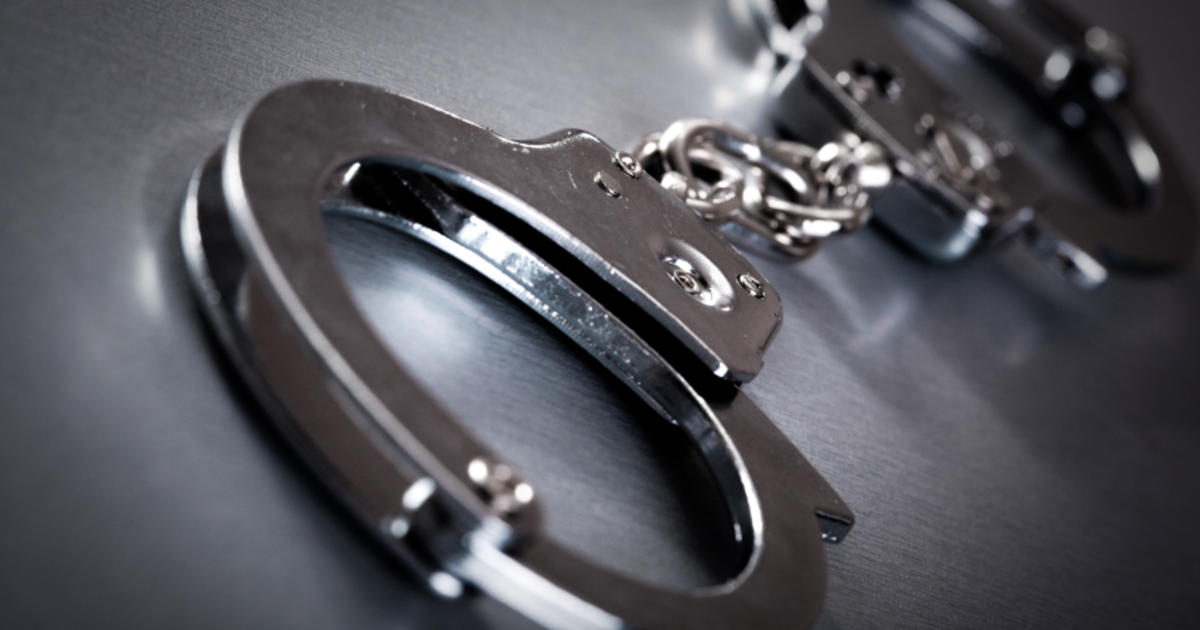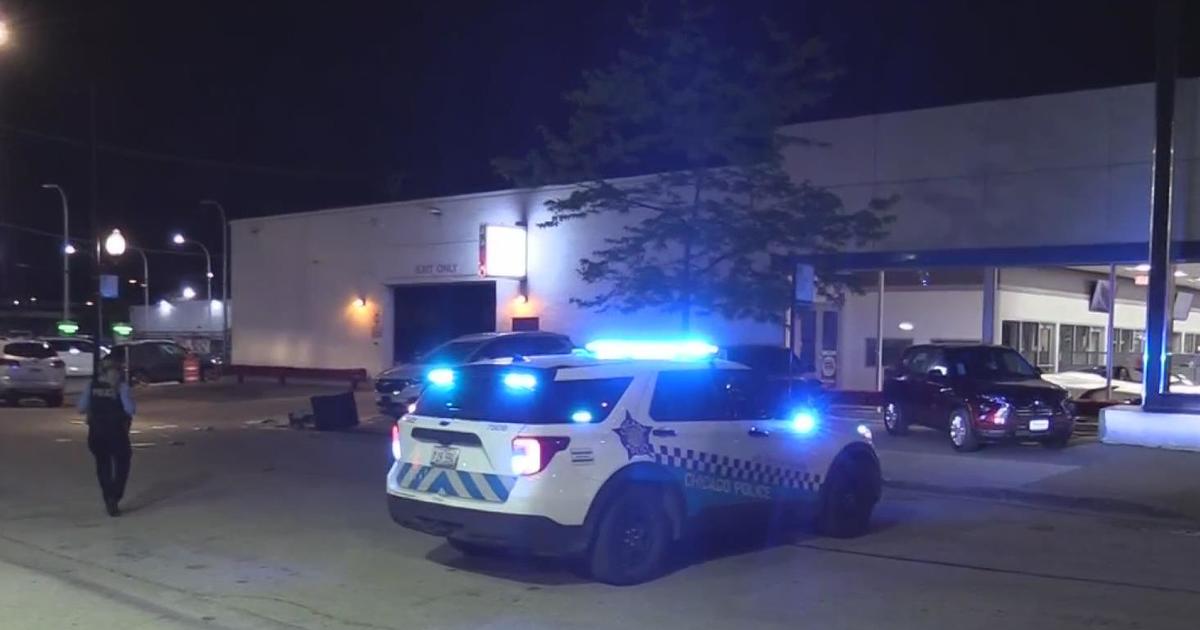What is the Loop in Chicago?
CHICAGO (CBS) -- What is the Loop in Chicago? You ask, we answer.
Put most simply, the Loop is the center of the downtown area. If you ask many Chicagoans, they would likely tell you it is bounded strictly by the Loop 'L' tracks – serving the Chicago Transit Authority's Brown, Purple, Green, Orange, and Pink lines. The Loop 'L' tracks run above the roadway on Wells Street, Van Buren Street, Wabash Avenue, and Lake Street.
Many sources say the Loop name originated with a rectangular loop around downtown streets for cable cars to turn around in the 1880s. The downtown 'L' structure came around a bit later, in 1897 – five years after the first 'L' train ran on what is now the South Side Green Line.
The Yerkes Design
Businessman Charles Tyson Yerkes developed the Loop 'L' structure – seeking a central connection point after buying up and aggregating competing rail lines serving different parts of the city. As recounted by the history site Chicago-L.org, Yerkes first had the Lake Street Elevated Railway extended east to Wabash Avenue in 1895, followed by the east and west legs of the new Loop along Wabash Avenue and Wells Street, respectively, and finally the south leg on Van Buren Street.
We may have been using different boundaries of the Loop for lo these more than 125 years if Yerkes had gone with his earlier plan to run the tracks for the southern leg of the 'L' on Harrison Street rather than Van Buren Street.
You may also know Yerkes' name for the Yerkes Observatory in Williams Bay, Wisconsin – which he financed for the University of Chicago's astrophysics research. You also may know that Yerkes, by all accounts, was a shameless robber baron who was known for getting his way through bribery and blackmail.
There is a crater on the moon named after Charles Tyson Yerkes. But there is nothing named after him in the Chicago Loop.
Landmarks in (and out of) The Loop
By this strictest definition, City Hall; Daley Plaza and the Picasso; the Thompson Center; Federal Plaza; the Chase Tower; the Board of Trade; the Macy's flagship store; the Chicago, Nederlander, Goodman, Cadillac Palace, and CIBC theatres; the Palmer House Hilton; the Rookery; the Berghoff Restaurant; and the "goth Target" that was once a Carson Pirie Scott are all undeniably in the Loop. And that long list barely scratches the surface of Loop landmarks.
But also by that strict definition, Millennium Park, Grant Park, Buckingham Fountain, and the Art Institute of Chicago, and the Chicago Cultural Center – all east of the tracks on Wabash Avenue – would not fall into the Loop. Nor would the Willis Tower – west of the tracks on Wells Street; the Harold Washington Library Center, south of the tracks on Van Buren Street; or the Riverwalk, the Jewelers' Building, and the LondonHouse Chicago – north of the tracks on Lake Street.
But wouldn't a lot of people say some or all of those landmarks actually are in the Loop? It happens that the strictest definition is not the only one.
A larger Loop envisioned
Chicago famously has 77 community areas – of which the Loop is one. But the Loop community area covers much more land area than the space enclosed by the 'L' tracks – it stretches from Lake Michigan west to the South Branch of the Chicago River and from the Main Branch of the Chicago River south all the way to Roosevelt Road.
This is not new. The division of Chicago into 75 community areas was the work of University of Chicago sociologists Robert E. Park and Ernest Burgess in the 1920s – and other than the addition of the O'Hare community area by annexation in 1956, and the Edgewater community area after it broke away from Uptown in 1980, the boundaries have not changed.
But are the townhomes of Dearborn Park, the Roosevelt Collection Shops, and that fenced-off stretch of weedy vacant land just west of Wells Street and north of the Roosevelt Road overpass all really in the Loop like City Hall and Macy's? That perhaps seems a stretch.
South Loop
It is worth noting that there is no South Loop community area – the next community area to the south from the Loop is the Near South Side, which stretches down to 26th Street. Where the Loop ends and the South Loop begins might be a challenge to define – there's water to the north, east, and west, but there's dry land going south from the Loop clear on down to the Little Calumet River near 127th Street.
But most of us today would likely define the South Loop as everything south of the 'L' tracks and Van Buren Street – or maybe Ida B. Wells Drive, north of the Stevenson Expressway, and east of the South Branch of the River and Chinatown. That would include Printer's Row, the Roosevelt and Columbia College campuses, the Prairie Avenue District, Motor Row, Wintrust Arena, McCormick Place, and maybe the Museum Campus and Northerly Island – though those last two, being on parkland, tend to fall outside the boundaries of any neighborhood.
West Loop
There is also the West Loop. Nobody nitpicks to the point of including Franklin Street and north-south Wacker Drive in the West Loop by virtue of their being west of the 'L' tracks on Wells Street – the eastern boundary of the West Loop is the River's South Branch.
The area between the river and the Kennedy Expressway – which includes the Ogilvie Transportation Center and Union Station – is sometimes called the West Loop Gate. But the popular boundaries of the West Loop have expanded well to the west from there.
Historically, the West Loop was the site of the Haymarket labor uprising in 1886 – and the home of the seedy and squalid Skid Row along Madison Street for much of the 20th century. Today, it is one of the most fashionable and desirable areas of the city – encompassing the Fulton Market District, Restaurant Row on Randolph Street, Greektown.
As to how far west you can go while still saying you're in the West Loop, Google Maps places the western boundary at Ashland Avenue – two full miles east of State Street in the actual Loop. However, most people draw the southern boundary line for the West Loop along the Eisenhower Expressway – to the south, Little Italy, the University of Illinois at Chicago campus, and the Illinois Medical District fall simply into the Near West Side.
North Loop
What about the North Loop? To the extent that such a term has been used at all anytime recently, it has described the northernmost blocks of the Loop (under the more liberal definition that doesn't revolve around 'L' tracks) from Wacker Drive south to Washington Street – as with the North Loop Redevelopment Project of the 1970s and 80s.
A 1982 New York Times report called the North Loop "an area of second-run movies houses and street-corner orators with the Greyhound bus station as its focal point." Today in that same area, you'll find top-of-the-line Broadway in Chicago theatre productions and other first-rate stage shows.
But no sections of Chicago with "Loop" in the name are to be found north of the Main Branch of the Chicago River. Immediately north of the river, you will find yourself in River North if you're west of the Magnificent Mile on Michigan Avenue, or Streeterville if you're east of the Mag Mile. Many would agree those areas are still part of downtown Chicago – and they are undeniably part of the broader Central Business District – but the Loop they are not.
And what about the area that includes Lakeshore East Park, and old and new luxury high-rises such as Aqua, The Lancaster, The Shoreham, The Tides, The Chandler, Outer Drive East, Harbor Point? One might argue they could call that area the East Loop if they wanted to – but the term that stuck is the New East Side.
And while Chicago's Loop is surely the most famous, there are other cities that have neighborhoods by similar names. In St. Louis and adjoining University City, Missouri, the Delmar Loop – a popular dining and entertainment district – is sometimes just called the Loop. And Minneapolis has a community called the North Loop that amounts to more than just a few downtown blocks – as we use the term.





